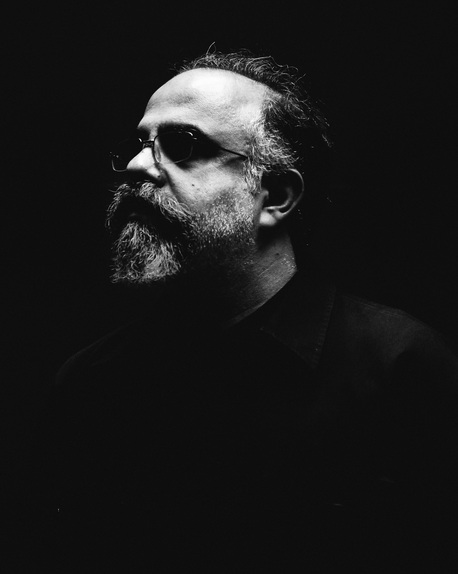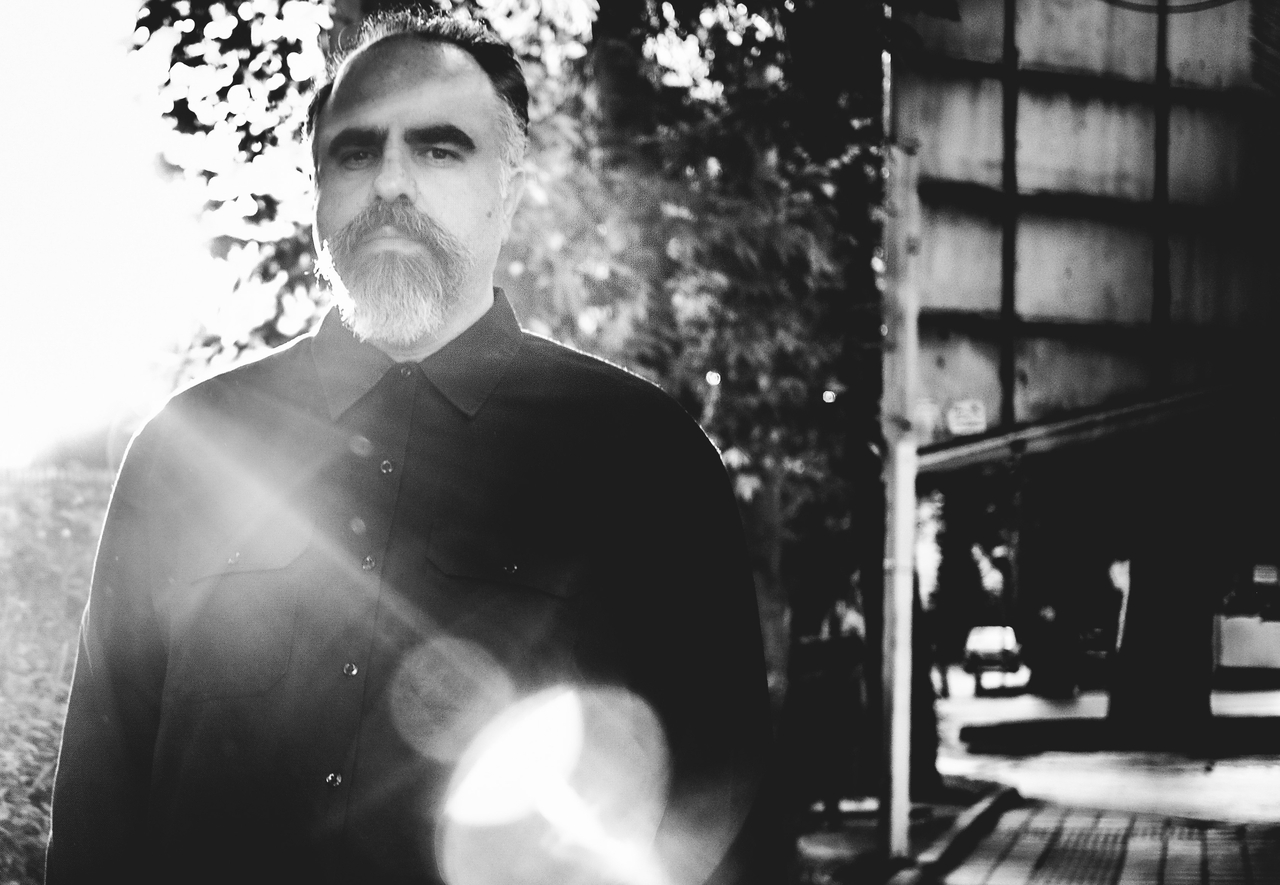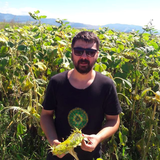
Photo credits: Arash Bolouri
Dragoș: We would like to learn some more about the project Sacred Horror In Design. How did you come up with it? How did you envision it at first?
Ata 'Sote' Ebtekar: If you know a little bit about my musical history, this is not the first time that I’m doing electronic music with Persian elements. I have the album called
Dastgaah and the album called
Persian electronic music: yesterday and today 1966-2000 that was published as a double album with
Alireza Mashayekhi, a pioneer of contemporary music in Iran. And there is Ornamental, an electro-acoustic album I made in collaboration with him and his orchestra, which consists of musicians using Iranian instruments and Western orchestral instruments. Basically, I have done a bunch of projects that involve Persian music.
Sacred Horror In Design is not the first project of this kind.
I tried avoiding going into an Iranian themed project for a long time, because I considered that I didn’t really have anything to say anymore. I usually don’t like to repeat myself with any project. Some people don’t care about this, but for me it’s very important that whenever I work on music, it has to be something that was not produced before. Something new, something that I would like to listen to, that I cannot purchase, because it doesn’t exist.
Laura: How do you know something doesn’t exist?
Sote: You’re right. Maybe I should rephrase. Something that I have not heard before.
Laura: Because this is a recurrent question for me too; the one about the vast-volume of music that’s out there.
Sote: Of course, especially now that there’s internet and it’s much easier to search for music. So yeah, it has to be something that I haven’t heard before.
Laura: In theory, all the information that we absorb, from when we are born until the present, is stocked there somewhere, or somehow, in our brains. And we use this information in different manners. It’s a probably a sum of everything that has influenced you over the years.
Sote: Precisely. But when you talk about a composition, it does come out from all of that. But let’s say, if I had a sister close to my age, and if both of us happened to be composers, would we make the same kind of work? I would say definitely no. For me it has to be something that I haven’t heard before, this is still very important to me. It was like this when I was 15 years old, when I started making electronic music, and it is the case today. It’s always my priority, whether I program patterns, design sounds, do synthesis, or compose a complete piece, to come up with something completely unique.
Let’s get back to your question about “Sacred Horror in Design”. A couple of years prior to starting to shape the concept, Iran was a hot topic in the world, due to the nuclear case and reappearing relationship attempt with the West. I didn’t want to exploit that. I hated the idea of using that timing in my favor. I could have exotify many Iranian themed projects for personal profit, and it would make me an immoral famous person. So, even doing an honorable project was a challenge, as I was fighting with the social and political climate of that period. I remember I was talking about this a lot with a bunch of friends back in Iran, and struggling with this ambivalence of doing any Persian influenced work or not.
Fast-forwarding to 2016: I had a solo performance at CTM festival, and during that era I was mostly doing my solo stuff, which I’m still working on. I was trying to get back to my techno and noise roots, without using the conventional formulas of techno and noise music. The album from Morphine Records
Architectonic and Opal Tapes’
Hardcore Sounds From Tehran are outcomes of that path of mine.
I remember telling
Jan Rohlf from CTM about an idea of an Iranian electro-acoustic project that I had been working on for a while. Eventually, he asked me to do a commissioned work for the next CTM festival. That gave me a big push to focus and concentrate, and to finally stop complaining and being negative about this whole situation of me struggling with not wanting to exploit anything. So, I started thinking and experimenting in a more focused manner. With the albums
Dastgaah and
Persian Electronic music: yesterday and today, I tried deconstructing traditional Iranian music. I broke all the conventional scales and rules, and I made some new scales, new sounds and new instruments. If music is about tradition, if music is about these habits, then it’s just a matter of getting used to this kind of new music. Who knows...maybe some time in the future this will count as traditional music. I was very serious about that concept.
Dragoș: Was it also a political statement?
Sote: It was more like a statement towards traditional Iranian “purism”. I’m generally against all “purists” notions.
“Oh, we can’t touch the traditional scales... “. It was more about that. With
Sacred Horror In Design, the idea was to keep the tradition, to keep untouched, unprocessed and not deconstructed the Iranian scales and the spaces between the notes and the actual sounds. And then compose electronics, contemporary high-end sound design and synthesis, and have these two be at an equal value, be in harmony, and without overpowering one or the other. That was the concept and the challenge. So, when you listen, at times, you cannot tell what’s synthetic and what’s acoustic. Sometimes you do, sometimes you don’t. And even if there is processing involved, keeping the Iranian elements intact is essential.
Dragoș: What about the visual dimension of the project? Did it come later on or was it there from the beginning? It’s so immersive!
Sote: It looks like it’s part of it, right?
Dragoș: It’s like an additional instrument.
Sote: Exactly! This started as a commissioned audio/visual project for CTM festival. It later became an album. I met
Tarik Barri in Berlin. Jan sent him my music and he liked it. I remember going to his place with Jan at some point and talking about this. I started making the music by myself and later on asked
Arash Bolouri and
Behrouz Pashaei to join the team. I would send Tarik bits and pieces online, and he would start working on them and send back material. Ten days before the premiere, Arash, Behrouz and I went to Berlin, and we pretty much stayed together in the same place for a week. The major part of the work was done already, but that was an important period to make everything come together.
Yesterday (e.n. Outernational Days 3) the audience was great! With this project we usually perform in bigger venues, bigger halls, with a bit of a distance from the audience. But at Club Control, they were right there in front of us! We really felt that. They were so reactive and they gave us a lot of energy. It was good, it was awesome!




